You might not notice it at the time, but there are some dangerous ingredients found in many products we use today. When we say “ingredients,” this also has to do with chemicals used or naturally occurring. It could be in stuff we make such as cleaners, medication, or packaged foods. Yet they could also be within specific animals, and consuming too much of that animal could lead to an early death.
Every single ingredient or chemical you see on this list is dangerous and you have likely come across them at some point in your life. Small or limited exposure to them will likely not affect you as much, because our bodies are remarkably able to heal from these things or adjust to them over time. However, overexposure will be harmful. Whether it’s food or something as simple as paint, dangerous ingredients are all around. These are some of the worst of the bunch!

Carrageenan
- What It’s Used In: Food, Shampoo, Drinks
- Problems Caused: Cancer, Ulcers, Colitis
While Carrageenan has been cleared for use by most nations, including by the United States FDA, it is not 100% safe. You can find it in numerous products such as fire extinguisher foam, toothpaste, shoe polish, etc. In most things you’ll see carrageenan used in, it’s almost always as a thickening agent. Extracted from seaweed, it is a naturally growing ingredient. What makes it so dangerous? Research has shown us that it can cause gut tumors and ulcers, as well as trigger colon cancer.
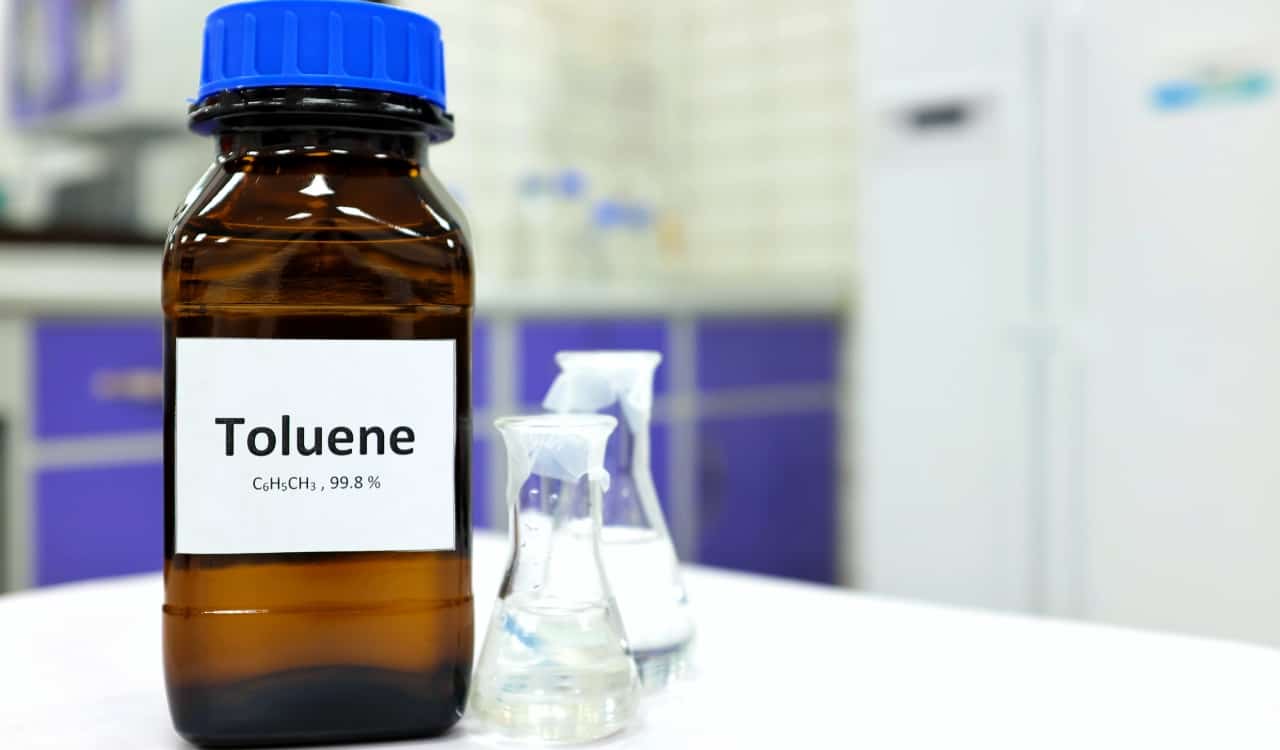
Toluene
- What It’s Used In: Cement, Glue, Industrial Feedstock, and Solvent
- Problems Caused: Respiratory Issues, Anxiety Trigger, Confusion
Most assume that Toluene is not that dangerous. Compared to other things used for the same products, this is somewhat true. However, it’s categorized as an “aromatic hydrocarbon” that happens to be a colorless, water-insoluble liquid. It has a smell similar to paint thinners, but it’s used as both a solvent and for industrial feedstock material. You’ll also see it in contact cement and glue too. What makes it one of the most dangerous ingredients? It is neurotoxic and causes issues with your sinuses and respiratory system, as well as confusion and triggers anxiety.
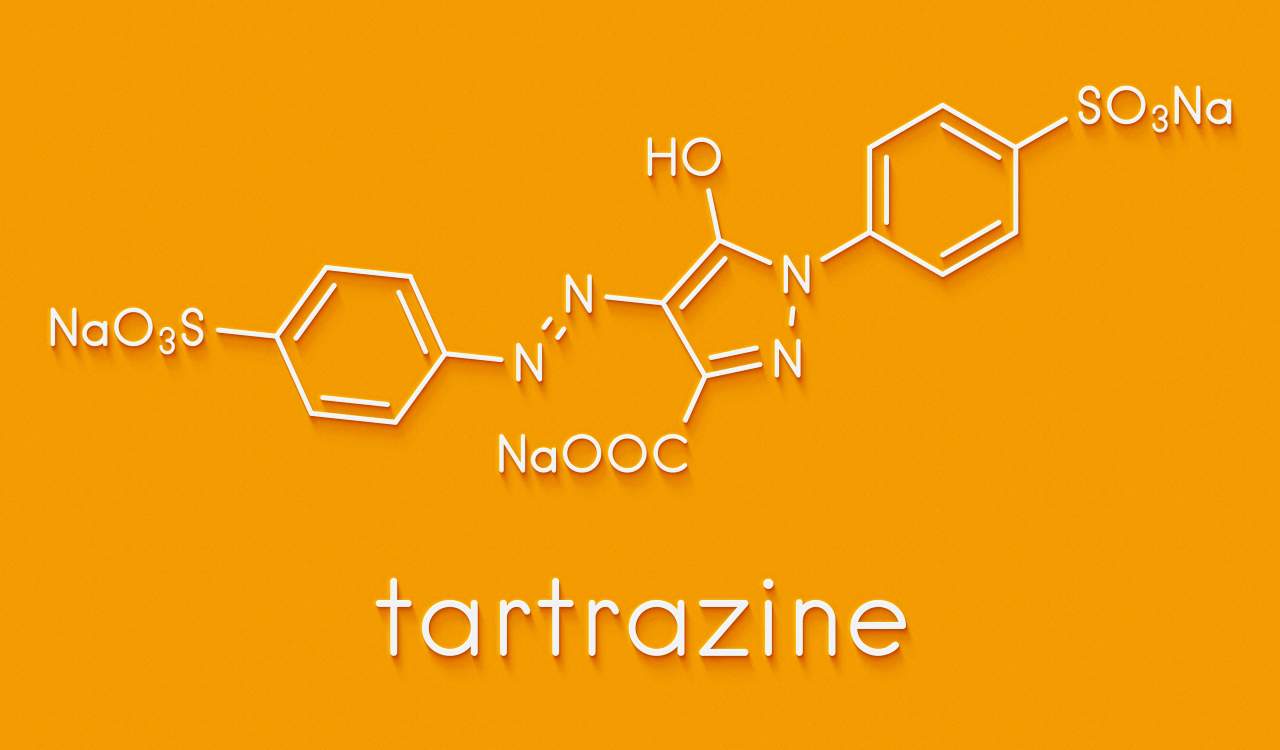
Yellow #5
- What It’s Used In: Food and Medication Dye, Cosmetics
- Problems Caused: Cancer
While the true name for this ingredient is “Tartrazine,” most know it by the name of Yellow #5. It is most commonly used as a food coloring to achieve the color “yellow.” Outside of foods, some medications use it to achieve the yellow color as well. At times, it has even been used in cosmetics. What makes it one of the most dangerous ingredients known today is that it is contaminated with cancer-causing substances. The FDA claims that Yellow #5 does not cause an immediate threat to humans. However, overexposure can harm cells over time.
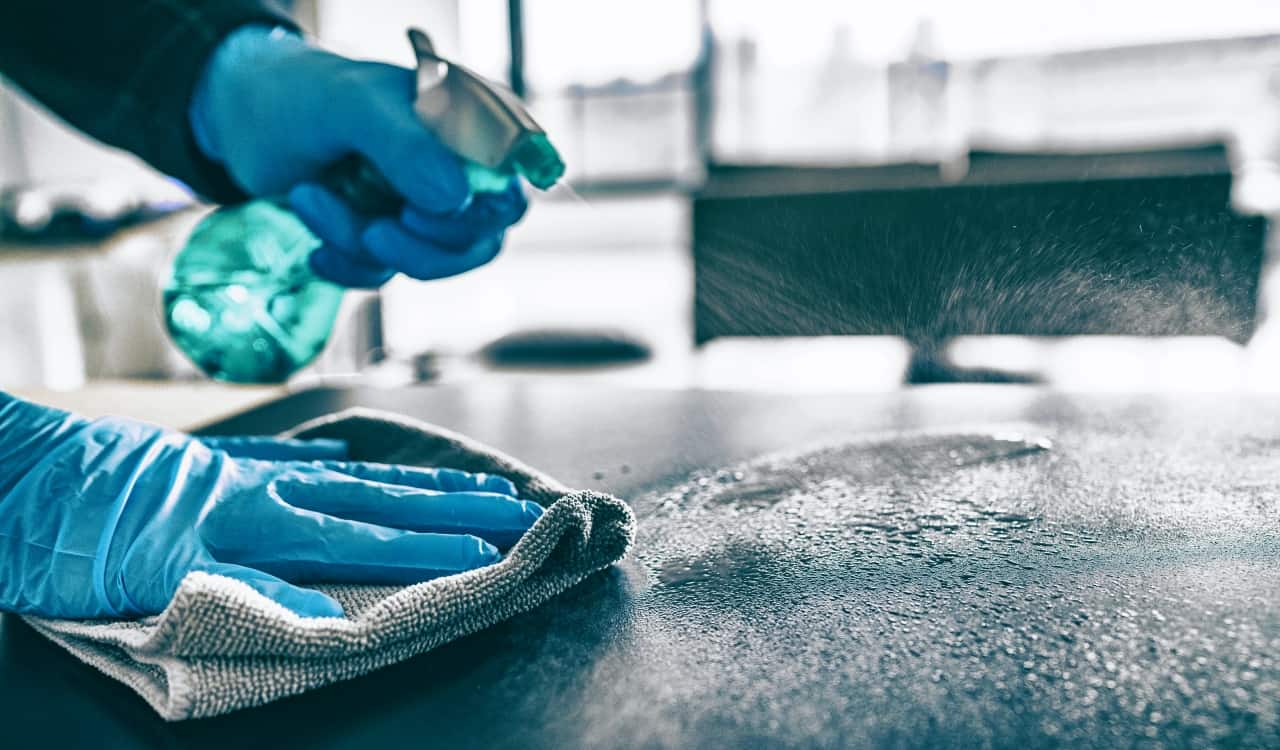
Quaternary Ammonium Compounds (QACs)
- What It’s Used In: Cleaners, Sanitizers, Disinfectants, Fabric Softeners, Etc.
- Problems Caused: Eye, Nose, and Throat Irritation, Sinus Problems, Skin Rashes
Often referred to simply as “Quats” or “QACs,” quaternary ammonium compounds are used in cleaners, sanitizers, disinfectants, fabric softeners, and much more. While the job they do is usually pretty good, QACs are still some of the most dangerous ingredients one can use. Some can cause skin rashes even with limited exposure to them. QACs also can burn the eyes and breathing them in can cause severe sinus issues, as well as irritation to the nose and throat. The U.S. Environmental Protection Agency has stated that one should not overuse QACs, to avoid environmental issues.

Azodicarbonamide
- What It’s Used In: Shoes, Mats
- Problems Caused: It’s A Carcinogen, Causes Respiratory Issues, Asthma
While you might not know the name right off the bat, it is quite likely you possess something that uses Azodicarbonamide. One of the most common things this ingredient happens to be part of is yoga mats. Yet you might also see them in some flip-flops too. It is basically a foamed plastic. Azodicarbonamide is also capable of waterproofness or water resistance, which is why they work so well in things where sweat is involved. Yet Azodicarbonamide is also a carcinogenic. Many countries have now banned its use, especially after it was found to also cause respiratory problems.
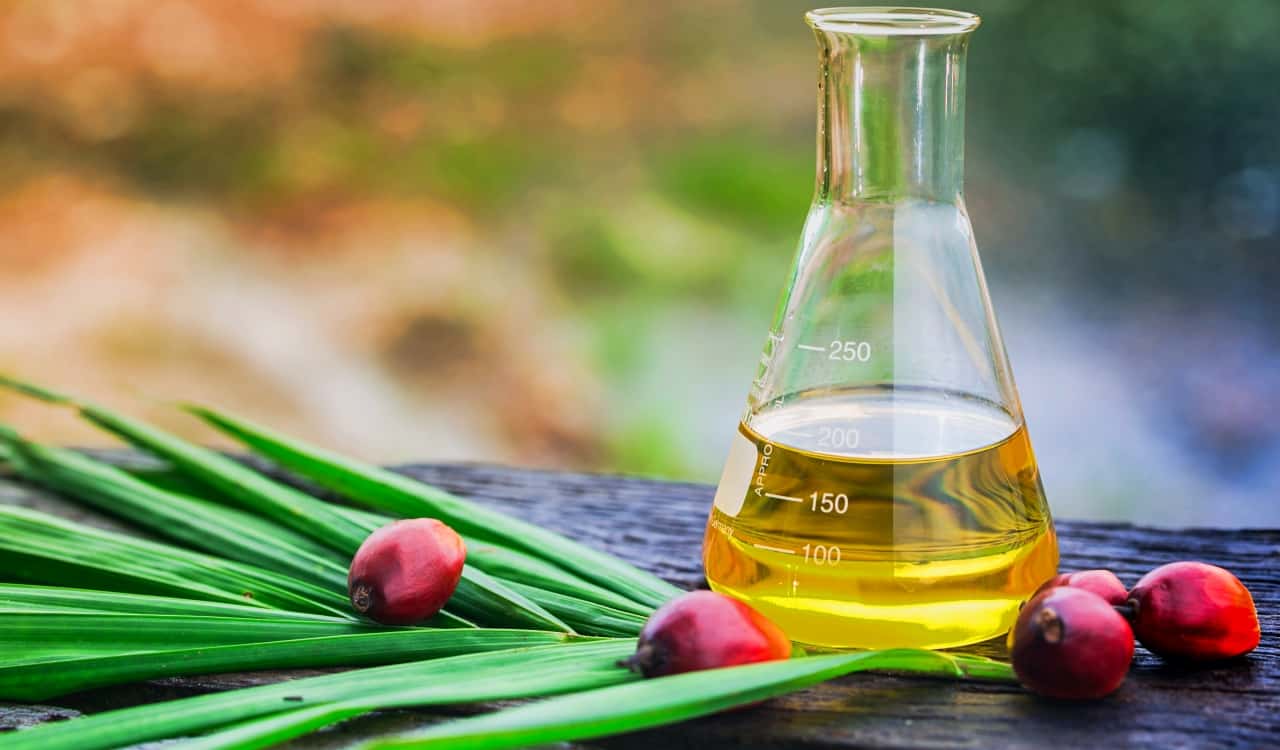
Palm Oil
- What It’s Used In: Cosmetics, Biofuels, Food Prep
- Problems Caused: Plantations Release Excess CO2, Cardiovascular Effect
Most know Palm Oil for being a vegetable oil that one might cook with. This is the most popular use of the stuff, and that makes it well-liked all over the world. Yet it has also become a biofuel and it’s even used in some cosmetics. However, we now know that it can be problematic to your heart if used too much. The real problem with palm oil is the environmental impact it has. As of 2014, it has accounted for over 30% of all global oils produced from oil crops. The palm oil plantations also release a lot of carbon dioxide. Once places like rainforests are cleared, there is not enough to soak up excess carbon.

DEET
- What It’s Used In: Insect Repellants
- Problems Caused: Skin Irritation/Rashes, Neurological Problems
Diethyltoluamide, commonly known as DEET, is a popular ingredient used in insect repellants. It can be applied to the skin or even clothing to help keep away mosquitos, ticks, fleas, leeches, and much more. While DEET might be incredibly useful for this area, it is certainly not 100% safe. In fact, it is one of the few dangerous ingredients on this list banned in some U.S. states right now. New York actually banned it years ago. While it can cause skin irritation or rashes, it has also been linked to neurological problems. Specifically, seizures!

Recombinant Bovine Growth Hormone (rBGH)
- What It’s Used In: Cow Milk
- Problems Caused: Potential Cancer Risk
For quite some time, we knew that cows were certainly affected negatively by Recombinant Bovine Growth Hormones. Of course, this was forced hormone use, so what did you expect? The original goal was that rBGH could be used to increase milk production among cows. It might even beef them up for slaughter later on. Several European countries have banned the use of it, as they fear how it’ll directly impact humans. Some testing claims milk with rBGH could cause cancer after long-term use, but the U.S. FDA disagrees with this and allows American farmers to utilize it freely.
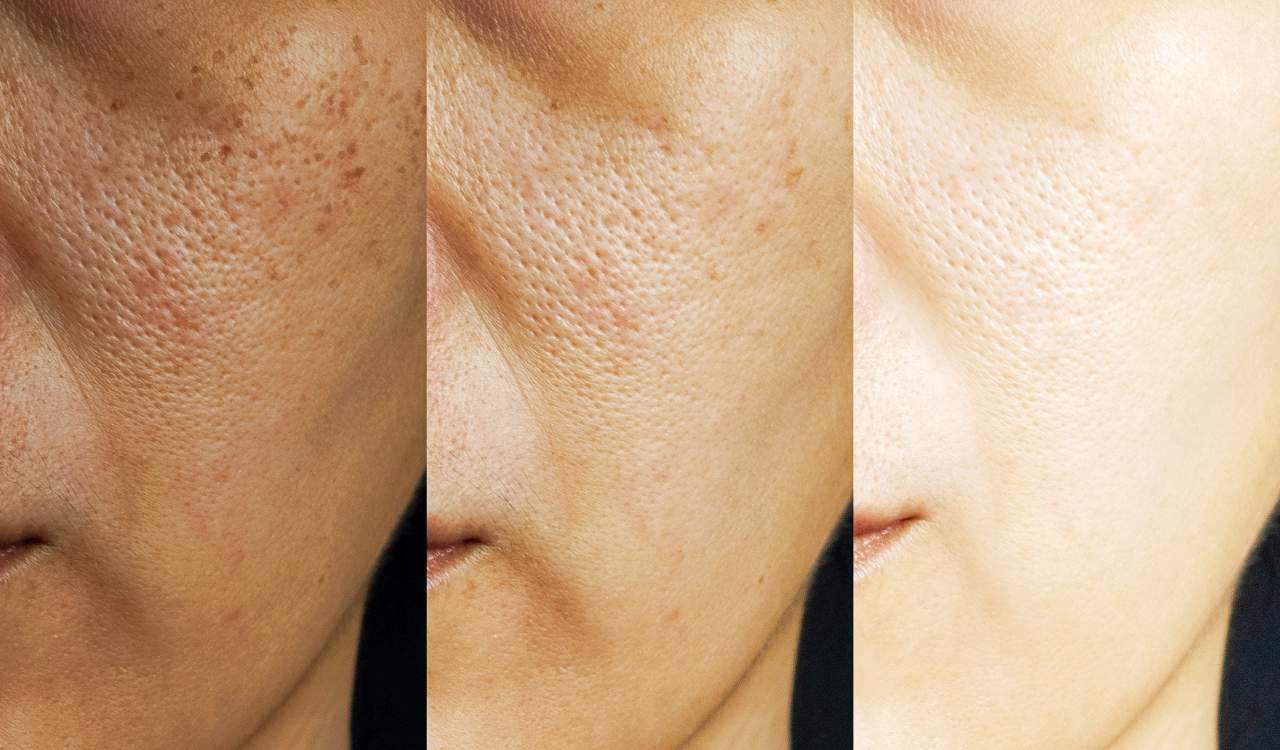
Hydroquinone
- What It’s Used In: Cosmetics, Skin Bleaching
- Problems Caused: Cytotoxic Issues, Skin Irritation, Ochronosis
Hydroquinone has been used for a long time in things like cosmetics. The main use for it tends to be lightening the skin, which can help for specific make-up needs. As well as for people with darker skin, who wish to “lighten” said skin. Although this form of bleaching the skin is not recommended, hydroquinone’s effects are not permanent. The United States’ recent CARES Act actually banned its use in America. Yet European nations banned it for years due to its cytotoxic effects. It is known to be toxic to skin cells and can prevent them from making melanin pigments. It can also cause skin irritation and even ochronosis.
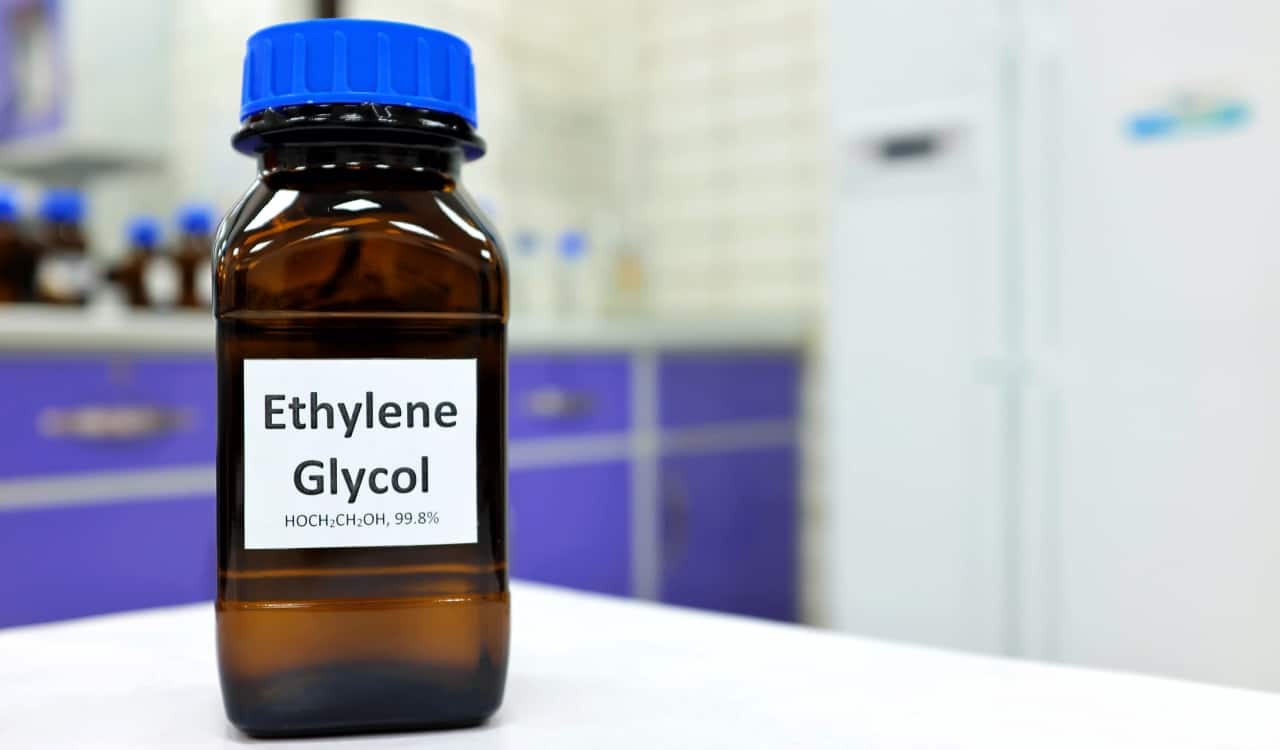
Ethylene Glycol
- What It’s Used In: Antifreeze, Polyester Fibers, Etc.
- Problems Caused: Affects Kidney Function, Nervous System, Heart, and Lungs
You’ll likely see Ethylene Glycol pop up off and on when it comes to its use in specific areas. Usually, it will be used in polyester fibers as well as antifreeze. While it is not the main chemical ingredient used in either one, its usage is by no means a small part of them. It doesn’t have an odor nor color, so you’d never know it was present. Yet in spite of being an “organic” chemical, it does a lot of harm to the human body. EGs break down in our bodies to crystalize, which then collects in the kidneys and affects how they function. That is along with affecting the body’s acid balance, causing nervous system issues.

Per-And-Polyfluoroalkyl Substances (PFAs)
- What It’s Used In: Non-Stick Pans, Stain-Resistant Clothing, Water-Resistant Clothing, Cleaning Products
- Problems Caused: Thyroid, Liver, Kidney Failure and Developmental Issues, Cancer, And Much Much More
If you want to track down one of the most dangerous ingredients on the planet that many agree is a problem, look no further than PFAs. Their true name is “Per-And-Polyfluoroalkyl Substances,” and there are quite a lot of them. The main use for them has been for non-stick pans and stain-resistant clothing. Some like them due to being useful in emulsion polymerization for fluoropolymers, but they are very dangerous. The U.S. EPA lists 8,163 of them on its toxicity database. For years, they caused problems with the thyroid, cholesterol, and liver. Then we found out developmental issues were caused by them too.

Parabens
- What It’s Used In: Cosmetics and Body Care Products
- Problems Caused: Tumor Growth
Most may not know the name “Paraben” but this is one of the most dangerous ingredients used in cosmetics and other body care products today. Known as an “artificial preservative,” it has been in use since the 1920s. Cosmetics naturally have materials that will biodegrade, so paraben allows them to stay active longer. They do this by reducing the growth of bad bacteria and mold, increasing shelf-life. However, parabens disrupt hormone function, mimicking estrogen. Too much of this can trigger breast cell division, which can then cause the growth of tumors. Making it a cancerous ingredient.

Enriched Flour
- What It’s Used In: Bread
- Problems Caused: Sugar Spike and Crash
While the issues caused by enriched flour are not as severe as others on this list, it is still good to know about. Most assume that enriched flour is good for you. This is somewhat true. While normal flour is made from things like grain, wheat, oat, and corn, enriched flour is sprayed with vitamins and other nutrients. It is pretty much there to replace the nutritional value that is lost when the bran and germ are removed (outer shell and core). Yet this same flour can also give you a sugar spike and crash without any nutritional value too. With enriched flour, you’re essentially removing normal bread and its normal assets.
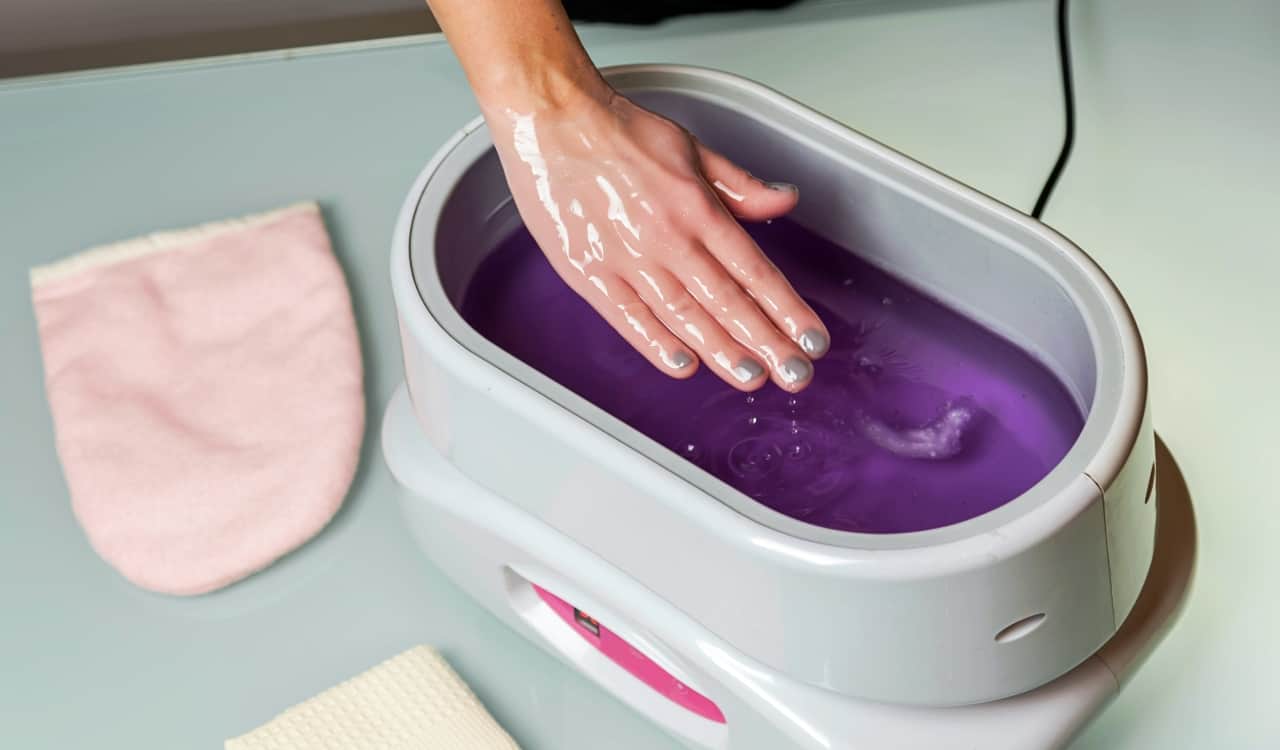
Paraffin
- What It’s Used In: Candles, Cosmetics, Polishes, Waterproofing and Sealing
- Problems Caused: Creates Carcinogenic Chemicals
You might not know the name very well, but you’ve likely used something that contained paraffin. Some might know it best as “kerosene.” It’s known for being a wax that’s also flammable. This makes it perfect for candles. Yet it’s also used to waterproof products. You might also see it used in cosmetics and polishes too. The issue is that paraffin creates toxic, carcinogenic chemicals when it’s burned. The toxins released when paraffin is used are equal to those found in diesel fuel. Which themselves are linked to asthma and lung cancer, thus linking paraffin to the same issues.

Atrazine
- What It’s Used In: Herbicides
- Problems Caused: Cancer, Tumors, Endocrine-Disrupting, Birth Defects, Etc.
Atrazine is known to be one of the most dangerous ingredients used in the world of agriculture. It’s commonly used as a herbicide in both Australia and the United States. The U.S. EPA has been heavily inconclusive on it and often criticized for taking a capitalistic view on atrazine. The European Union banned it back in 2004 when they noticed issues with their water as a direct result of the chemical. Even though scientists in the United States have found it to be toxic to all mammals, as well as cause cancer and birth defects. The EPA has yet to ban it in America. In spite of environmentalists pushing for them to do so.

Phenylenediamine
- What It’s Used In: Mostly Hair Dyes and Dye Products
- Problems Caused: Asthma, Vertigo, Renal Failure, Convulsions, Tremors, Dermatitis, Coma
There are several versions of phenylenediamine, with both “O” and “M” being the two most commonly known. Pretty much all of them are bad for humans. These dangerous ingredients are used in most hair dyes, either semi-permanent or completely permanent. While the U.S. EPA has hesitated to call it carcinogenic, they have claimed that even short-term exposure could cause dermatitis, eye irritation, asthma, renal failure, vertigo, tremors, convulsions, and even comas. In animal studies, scientists found that they disrupted body weight. Clearly, these are dangerous ingredients we should not be using.

Soybean Oil
- What It’s Used In: Cooking Oil
- Problems Caused: Obesity, Diabetes, Anxiety, Depression, Etc.
If you check out scientific studies regarding soybean oil, it’ll end up being a crapshoot. You might find positive benefits of using it such as promoting skin health, reducing cholesterol, and how it provided omega-3 fatty acids. But on the flip side of this, you’ll see studies that show how it causes metabolic and neurological changes in animals. Some newer research has found that soybean oil can lead to obesity and diabetes along with affecting your brain. This could cause early Alzheimer’s disease as well as anxiety and depression problems.

Perchlorates
- What It’s Used In: Food Packaging, Salt Production, Pyrotechnics
- Problems Caused: Thyroid Function
The most common area you’ll come across perchlorates is in most commercially produced salt. It is considered to be one of the more dangerous ingredients used in food. They are often used as oxidizers for pyrotechnic devices, as well as control static electricity for packaging food. Yet it contaminates food and water products, making it bad for our health. The specific perchlorate ions are toxic to the human thyroid gland. It disrupts the function of the thyroid, which can lead to the gland producing less of the thyroid hormone.

Triclosan
- What It’s Used In: Soap, Detergent, Toothpaste, Surgical Cleaning Treatment
- Problems Caused: Altering Of Hormones, Antibiotic-Resistant Germs
Most would look at Triclosan as an absolute good. It is a known antibacterial and antifungal agent found in various kinds of toothpaste, soaps, detergents, and surgical cleaning treatments. One would assume that it was fine, but it happens to be one of the most dangerous ingredients today. In animal testing, triclosan was found to alter normal hormone regulation. Yet in humans, it’s somehow causing the development of antibiotic-resistant germs. Which, as most doctors would tell you, is pretty bad for humans. As it would cause the formation of germs our immune system cannot handle.

Phthalates
- What It’s Used In: Soaps, Vinyl Flooring, Lubricants, Hard Plastic Products, Etc.
- Problems Caused: Can Damage The Liver, Kidneys, Lungs, and Reproductive System
It is almost certain that you have come across some type of product that uses phthalates. You’ll see it in literally hundreds of products, such as in soaps, vinyl flooring, lubricating oils, and much more. Many plastics use it to help harden them, thus making them more durable for a longer period of time. Thus, it could be used in toys, seating, and much more. It is part of the family of polyvinyl chlorides, better known as PVCs. It is widely known that this family can damage the liver, kidneys, lungs, and even the reproductive system in humans. However, this seems to mostly be a problem for long-term exposure.
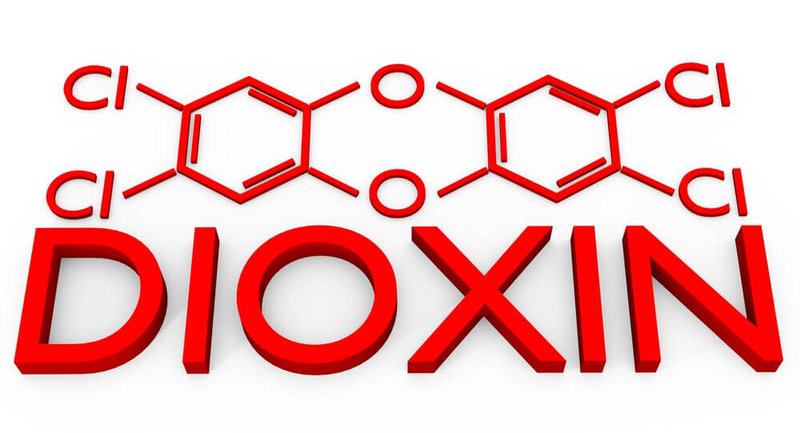
Dioxin
- What It’s Used In: Mostly Found In Animals
- Problems Caused: Cancer, Problems With Reproductive Health, Killing Immune System
We come across Dioxin all the time, whether we want to or not. Usually, it is not too harmful as it’s found in the fatty tissue of animals. When we’re exposed to dioxin, it’s almost always through meat or dairy products. Yet fish also have it within them, making dioxin incredibly common. However, it has also been used in other areas. We now know that it is a highly toxic chemical that can kill people. It screws with our reproductive systems, overall human development, our immune system. One study was done on prisoners by Dr. Albert M. Kligman using dioxin, the main ingredient in Agent Orange, getting them incredibly sick.
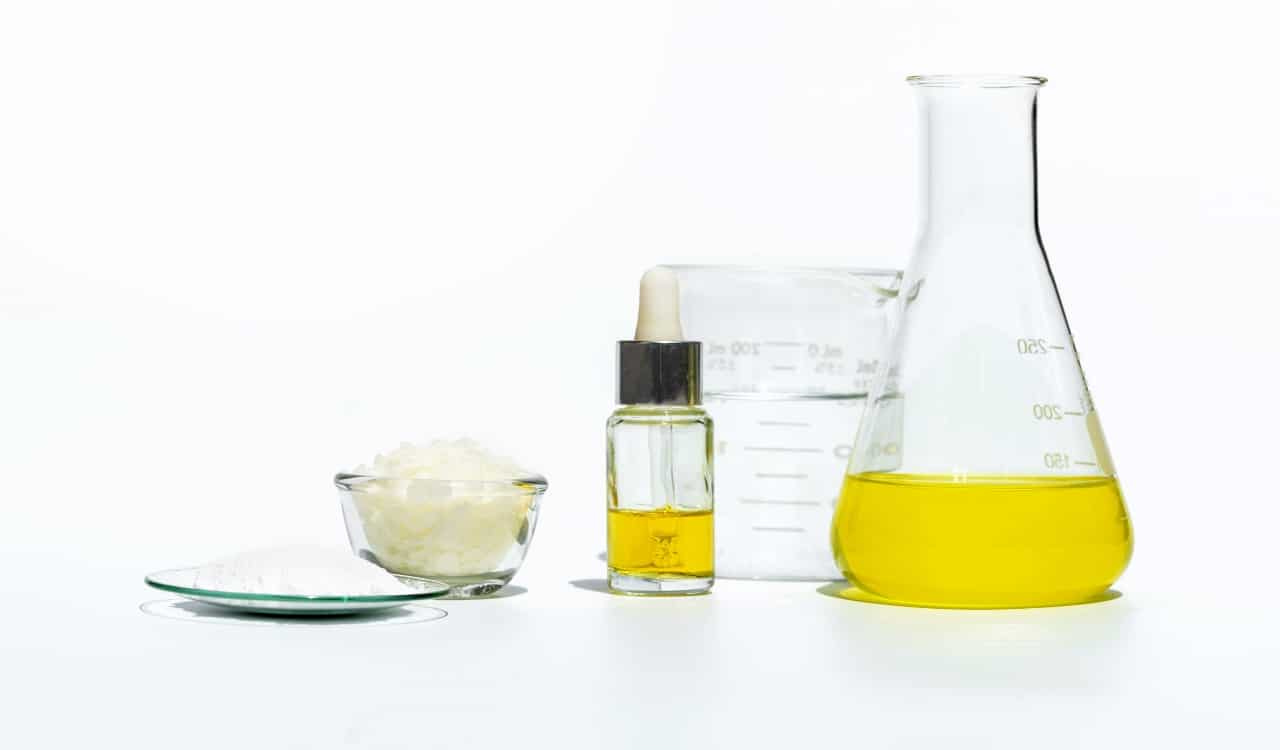
Propylene Glycol Alginate (E405)
- What It’s Used In: Emulsifier, Stabilizer, Thickener
- Problems Caused: Nausea, Vertigo, Seizures
Related to ethylene glycol, Propylene Glycol Alginate works in a similar way. Often used as a thickener, it is also used as an emulsifier and stabilizer all used in food. The food additive can be helpful, but it still causes problems. Most of the issues related to it are neurological. Mild issues like nausea, vertigo, and random sensations can happen with very little exposure to it. But long-term exposure can cause more severe neurological problems, such as seizures. Thus making this one of the more dangerous ingredients used in products today.

Oxybenzone
- What It’s Used In: Mostly Sunscreen
- Problems Caused: Skin Allergies, Hormone Disruption
While there have been a lot of benefits to using Oxybenzone over the years, there are also many negatives. The most common use is in sunscreen, as oxybenzone is great at absorbing UVB and UVA rays. It causes photochemical excitation as well as the absorption of energy. Naturally, this can be helpful, especially for those with fair skin or hoping to avoid skin cancer. Yet there are also bad side effects too, such as the fact that it’s hazardous to the eyes. Plus, it’s an allergen that can cause skin allergies along with hormone disruption. It actually negatively affects the prime hormone in both men and women!
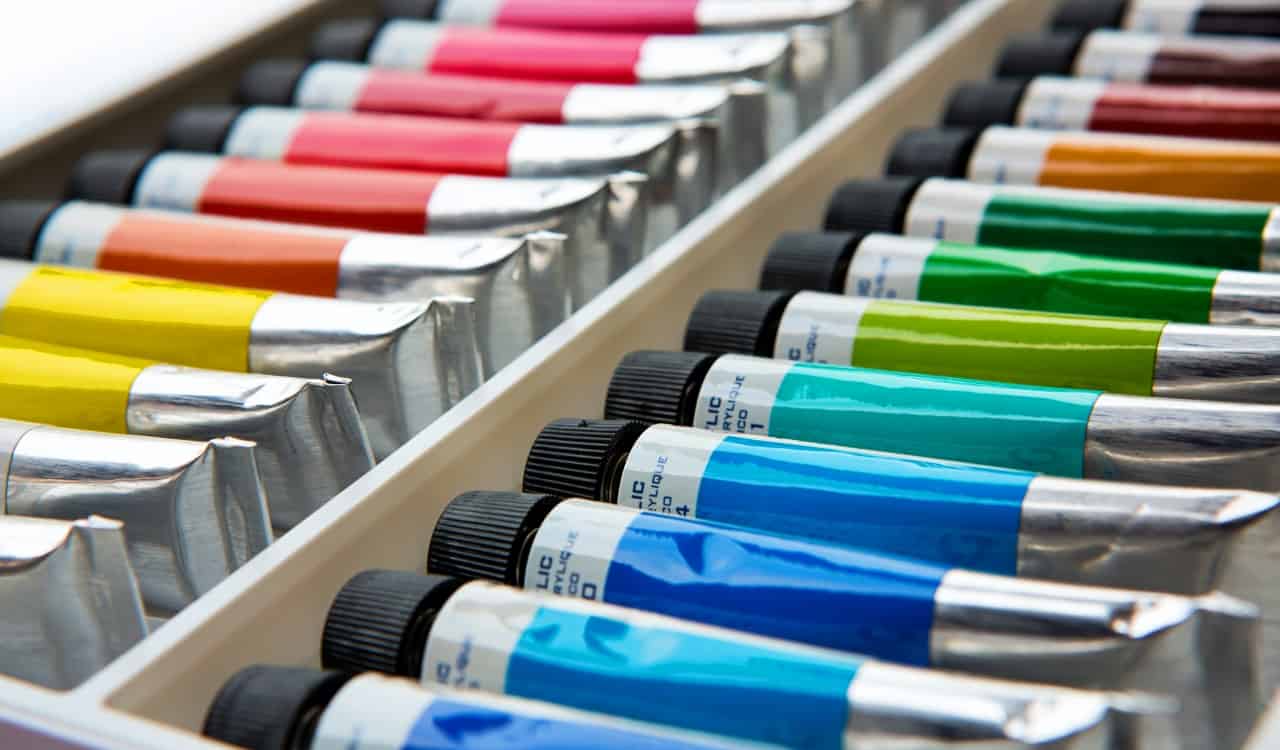
Alkylphenol Ethoxylates (APEs)
- What It’s Used In: Acrylic Paint, Laundry Products, Emulsifiers
- Problems Caused: Disruption To Our Endocrine System
Alkylphenol Ethoxylates are mostly classified as “surfactants.” These are basically cleaners that are able to clean up at the surface of something. This is likely why you’ll see APEs used in cleaning or laundry products, wetting agents, and obviously softeners too. Of course, they are also used in some yarn or fabric to keep them clean longer, but you might also see them used in paint. Sadly, this is one of the more dangerous ingredients on the market. APEs are bad for the environment, affecting many animals. In humans, they disrupt our endocrine system. Which can be harmful to our long-term health.

Nonylphenols (NP9)
- What It’s Used In: Cleaning Products, Emulsifiers, Solubilizers, Manufactured Antioxidants
- Problems Caused: Environmentally Toxic (Thus Making Us Sicker)
You’ve likely never heard about Nonylphenols, but no one would expect you to know about them. Yet they are used in manufactured antioxidants, laundry and dish soap, emulsifiers, and solubilizers. This is also part of the problem because this chemical is going to end up in the water via the sewers at least. It’s highly toxic to fish, which are then consumed by humans and harm us by proxy. The European Union’s REACH Chemicals Committee banned the use of nonylphenols in 2015 on all imported textiles and clothing. Only 0.01% of the stuff is allowed to enter Europe in any single product.

Refined Vegetable Oil
- What It’s Used In: Cooking Oil
- Problems Caused: Inflammation, Impair Insulin Response, Contribute To Heart Disease and Some Cancers
We referenced soybean oil earlier, which is part of this overall refined vegetable oil list. However, there are far more involved in the area. This is why we felt the big term needed its own individual section. Those included as RVOs are corn oil, safflower oil, canola oil, and even peanut oil. Extracting oil from seeds seems pretty natural, so what’s wrong? In commercial use, they are deodorized, bleached, exposed to high temperatures, and utilize chemical solvents. This removes all proper vitamins and minerals they once had. Now, they cause inflammation, impair one’s insulin response, and contribute to heart disease.

Butylated Hydroxyanisole (BHA)
- What It’s Used In: As Antioxidant To Keep Food Fresh For Longer
- Problems Caused: Cancer/Tumors
While it would be easy for us to simply outright state Butylated Hydroxyanisole is one of the more dangerous ingredients around, we cannot say this. Mostly known as an antioxidant, it has been in use since around 1947. The idea was that it could prevent rancid issues in edible fats and oils. Yet we found out in the 1980s via animal testing that they can potentially cause tumors. This made BHAs sort of stand out as dangerous, considering it seemed that they were carcinogenic. But other studies since have claimed it is an anticarcinogen, muddying the waters a bit for the scientific community.
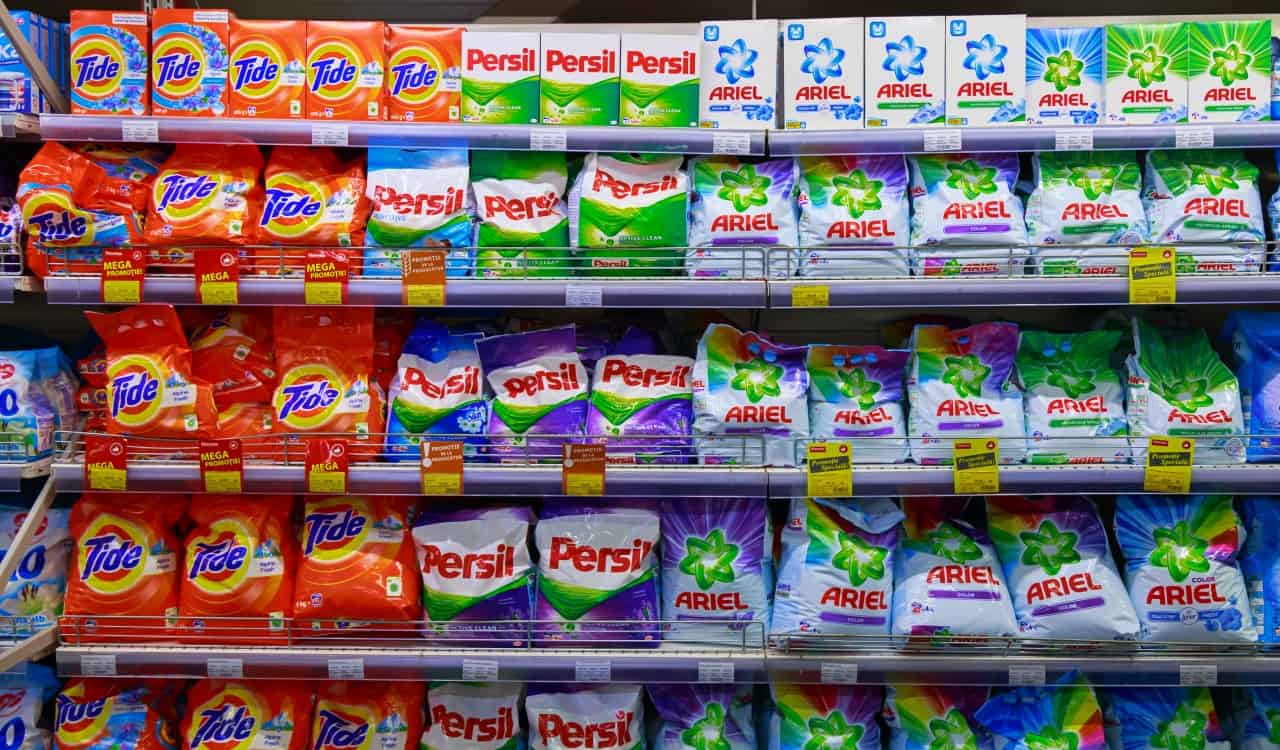
Diethanolamine
- What It’s Used In: Cleaning and Laundry Products, Soaps, Surfactants
- Problems Caused: Cancer
Likely one of the few dangerous ingredients on this list that is much harder to explain than necessary, diethanolamine has salts that have fatty acids. These are formulated into various soaps and surfactants, making them perfect for laundry liquid and dishwashing detergent. However, the surfactant nature they have makes them great for cosmetics, shampoo, and conditioners as well. However, today, we know it’s corrosive. The California Environmental Protection Agency lists it as a carcinogen and New Jersey’s Department of Health listed it as one of their hazardous substances.

Perfluorinated Compounds (PFCs)
- What It’s Used In: Outdoor Clothing, Building Materials, Food Packaging
- Problems Caused: Heart Disease, Affects Pregnant Women, Increases Chances For Prostate/Bladder Cancer
You’ll likely be able to closely compare Perfluorinated Compounds to PFAs referenced earlier. They do a lot of the same things for the most part. You’ll often see PFCs in food packagings, like what you might see in microwavable popcorn or fast food wrappers. They’re also used to create durable outdoor clothing, capable of handling any weather event. PFCs will also be used for building materials as well. However, it’s one of the more dangerous ingredients to use. It causes pregnancy-induced hypertension, contributes to heart disease, and increases the risk of both prostate and bladder cancer.
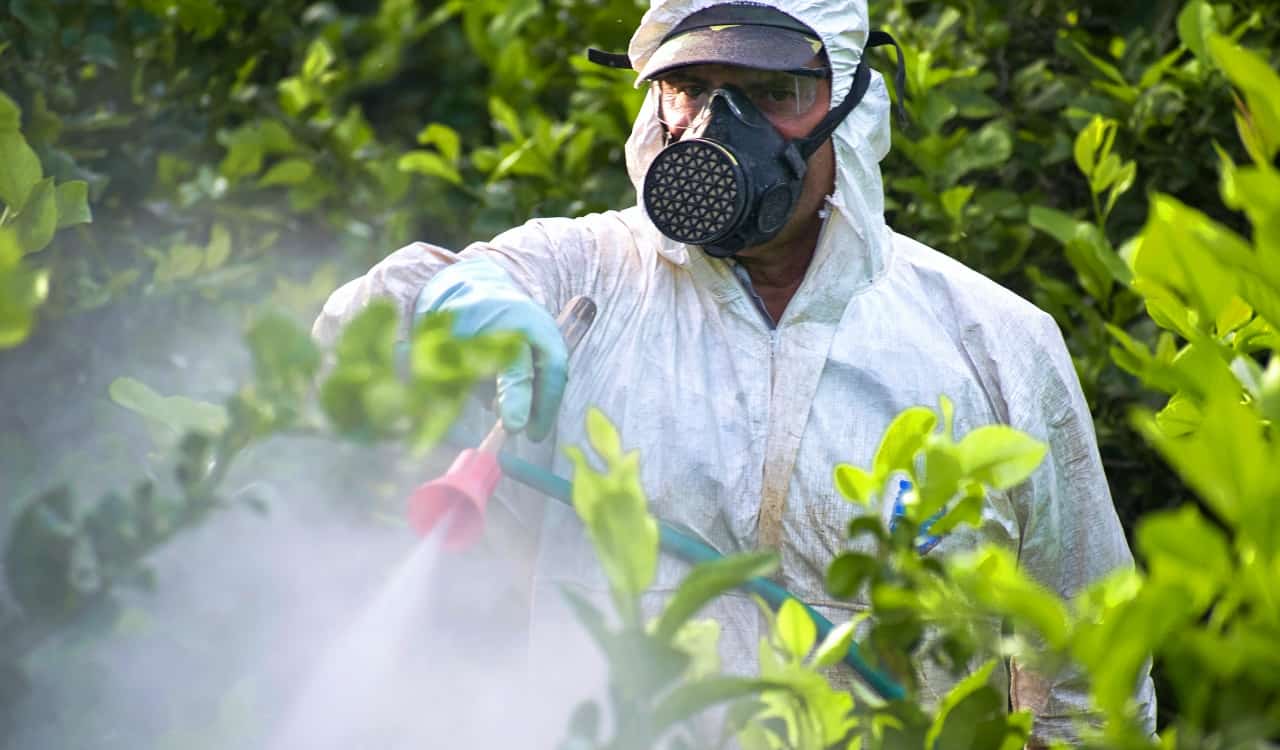
Organophosphates
- What It’s Used In: Insecticides
- Problems Caused: Neurological Issues, Neuropathy, Numbness, Muscle Weakness
Organophosphates are part of several major insecticides, used for taking out insects. They are able to do this by disrupting how their brains and nervous systems operate, thus killing them off. But keep in mind, if they are able to do this to insects then they could an effect on humans. In us, long-term exposure to organophosphates can cause several nervous system issues, leading to things like muscle weakness, numbness, and neuropathy. On top of this, they can affect the brain thus causing confusion, anxiety, loss of memory, depression, and even some personality changes.

Propyl Gallate
- What It’s Used In: Foods, Shampoos, Etc.
- Problems Caused: Endocrine Disrupter, Potentially Cancerous
Like other things on our list, Propyl Gallate is also used as an antioxidant. It will be added to foods as a way of containing the oils and fats within, to prevent oxidation. Sometimes, you’ll see it added to things like a TV dinner. Other times, it will be simply added to specific foods isolated from others as a mere food additive. While the National Institutes of Health claims propyl gallate is generally safe, they did not go as far as to say it was completely safe. When studied further, scientists found it was an endocrine disrupter, which means it interferes with human hormones. PG is also a suspected carcinogen.

Sodium Benzoate
- What It’s Used In: Preventing Food Spoilage
- Problems Caused: Increases Inflammation, Obesity, and Oxidative Stress and It’s A Potential Carcinogen
Sodium Benzoate is simply the sodium salt of benzoic acid, which forms when the acid is dissolved in water. This is often why SB is used as a food pickling agent. It is widely used across the food industry though. You’ll see it used to prevent food spoilage, as it can stop harmful bacteria and even mold from forming. It can even slow or prevent changes in color, flavor, texture, and often even the PH balance. Yet this is one of the more dangerous ingredients around today due to its ability to increase inflammation, obesity, and oxidative stress. Sodium Benzoate is also considered a potential carcinogen.

Polychlorinated Biphenyls (PCBs)
- What It’s Used In: Electrical Equipment
- Problems Caused: Neurological Problems
Polychlorinated Biphenyls are mostly used in electrical equipment, such as transformers or capacitors. They are well-liked due to their lack of smell or taste. Plus, they are incredibly stable in extreme temperatures or pressures, especially when used in mixtures. Making them wonderful for scientists. However, PCBs are incredibly dangerous ingredients to use for anything, regardless of what. In fact, the United States banned their use in the country all the way back in 1979. This was due to fining widespread environmental contamination, and negative effects on human health in the form of neurological problems.

Tetrachloroethylene
- What It’s Used In: Dry Cleaning
- Problems Caused: Cancer, Central Nervous System Depressant
This is actually one of the few dangerous ingredients on our list known mostly for how harmful it is to humans than what it assists us with. While it is often used in dry cleaning products, we now don’t see it used nearly as much. The International Agency for Research on Cancer classifies it as a Group 2A Carcinogen. Tetrachloroethylene is mostly known as a central nervous system depressant, which is alone is enough to dislike its use. But it also dissolves fats from the skin, causing skin irritation. Due to issues surrounding it, the National Institutes of Health has several health and safety guidelines for its use.

Polybrominated Diphenyl Ethers (PBDEs)
- What It’s Used In: Flame-Resistant Tech
- Problems Caused: Neurological and Slow Motor Development
Polybrominated Diphenyl Ethers are most often found in electrical equipment, construction materials, coating, and more as a flame-retardant substance. PBDEs are tremendous at resisting degradation when exposed to the environment, making them great additions to products to keep them from catching on fire easily. Why are they bad? Children exposed to them have shown to have lower IQs, slower motor development, and poor attention skills. Even adults have shown neurological issues.

Fluoride
- What It’s Used In: Toothpaste, Water, Etc.
- Problems Caused: Neurological Issues, High Blood Pressure, Tooth Decay and Discoloration
Most know about Fluoride from the dentist’s office, which can help whiten your teeth. Yet many governments put it into the water supply to help filter out bad bacteria and chemicals, in an effort to give us cleaner drinking water. While there is a lot of good fluorides can do for us, overexposure to it can be harmful to human health. In fact, too much can lead to tooth discoloration and decay. Moreover, it can cause bone weakness, high blood pressure, neurological issues, and much more! We actually have our own human fluoride, but the chemical one helps to add those areas. Too much of it hurts them.

Butane
- What It’s Used In: Portable Lighters and Stoves, In-Home Heating, Etc.
- Problems Caused: Central Nervous System and Cardiovascular Problems
It is likely you know Butane best by its flammable properties, such as what you might see in butane torches. Overall, butane is odorless and colorless, making it a perfect addition to the world of portable lighters, stoves, etc. It is also used for heating too. Of course, the use of butane is still not good for the environment but it’s nowhere near as bad as other gases. Long-term exposure to butane, however, can be toxic. This can happen when it’s used to heat a home or cook food often. Toxicity can lead to central nervous system problems and even cardiovascular issues.

Chloroform
- What It’s Used In: Water Disinfectants
- Problems Caused: Damages Liver, Kidneys, Heart, Brain, Heart, Respiratory System
You’ll more often hear of Chloroform from television or movies when it’s used to render someone unconscious. It CAN do this when breathed in with no ventilation. It’s actually formed naturally but can be made in a lab (often using chlorine), making it common in industrial sectors. Due to being colorless and lacking a bad smell, it works well in these settings. Obviously, it can cause respiratory problems as well as damage the liver, kidneys, brain, heart, even bone marrow. At times, it has cause hepatitis too.
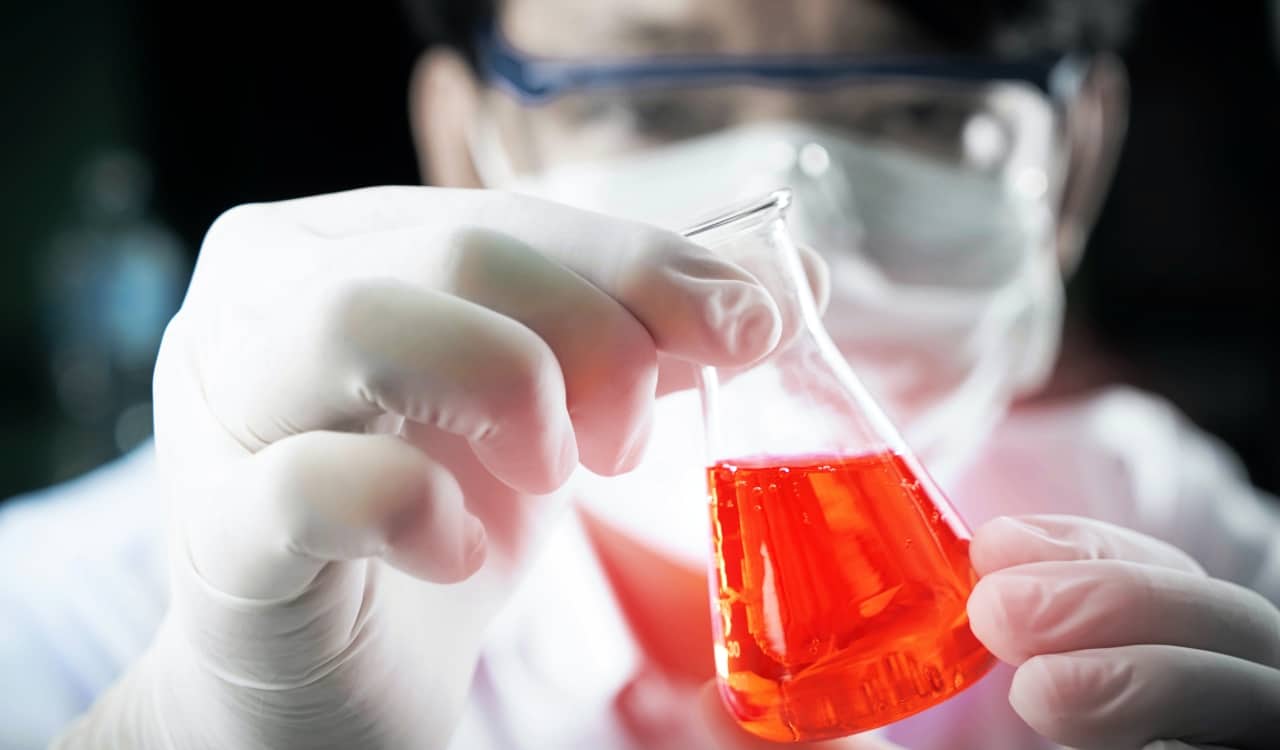
Benzene
- What It’s Used In: Glues, Tobacco Products, Gasoline
- Problems Caused: Nerve Damage, Leukemia
Benzene is found in a lot of stuff. Due to being heavier than the air, it sinks when released into the environment. You’ll commonly see it in cleaning products, glues, adhesives, and even tobacco smoke and gasoline. In fact, the latter two tend to be the main areas you’ll see benzene in use. While small exposure to benzene isn’t too harmful, long-term exposure can most certainly be a problem. Benzene is known to cause cancer like leukemia and even nerve damage.
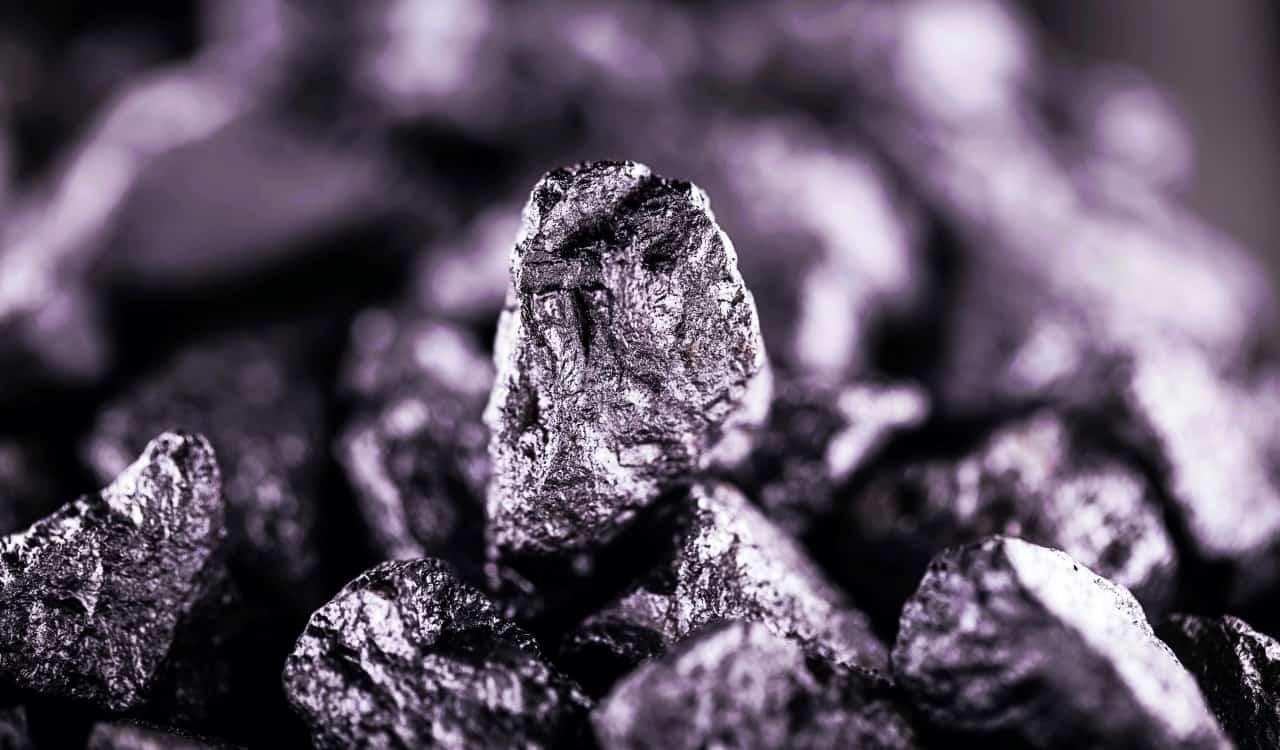
Aluminum
- What It’s Used In: Electronics, Power Lines, Ships, Etc.
- Problems Caused: Neurological Issues, Alzheimer’s Disease
Aluminum is used in several areas. Due to being a flexible metal, there have been endless possibilities for it. We see it used in ships, consumer electronics, window frames, power lines, food storage, and much more. While most people won’t ever be overexposed to it, aluminum can cause problems in those that are. If you’re overexposed, you’ll develop aluminum toxicity which can cause neurological issues like speech issues and seizures. In more serious cases, it can cause Alzheimer’s disease.
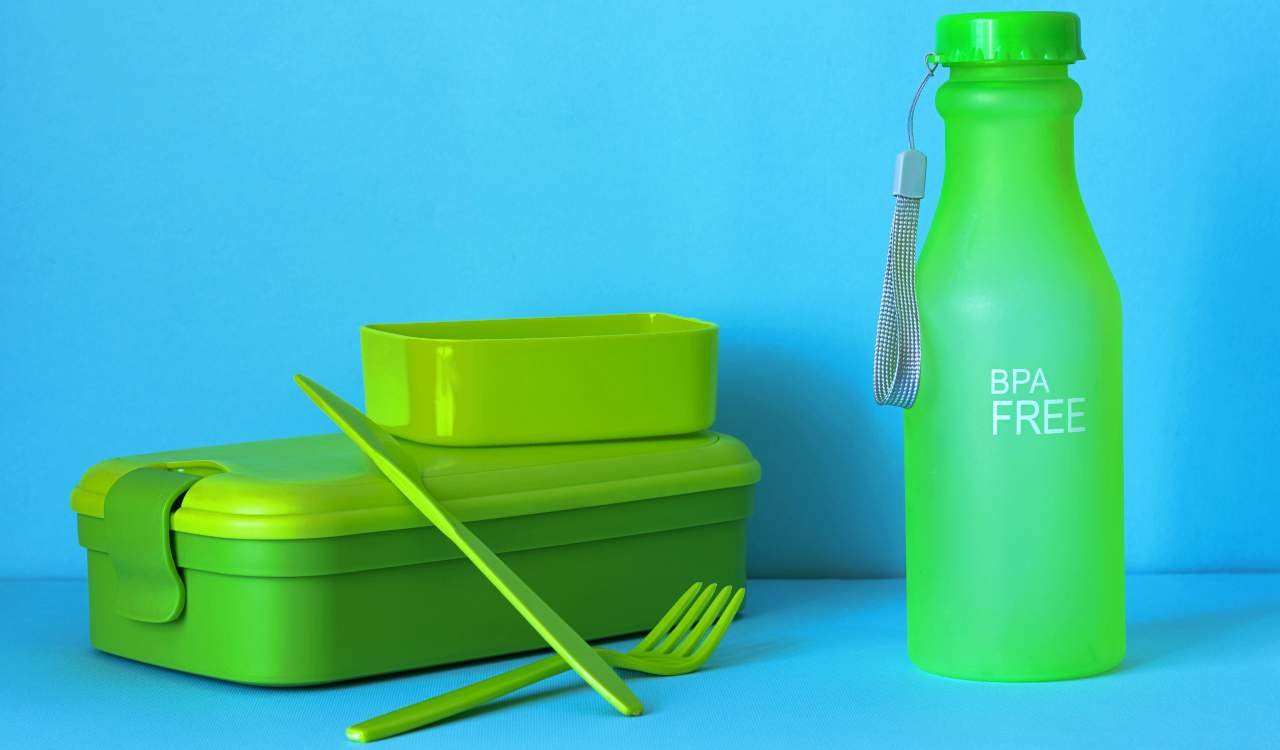
Bisphenol A (BPA)
- What It’s Used In: Reusable Water Bottles, Food Containers, Etc.
- Problems Caused: Reproductive and Neurological Problems, Type 2 Diabetes, Cardiovascular Diseases
You’ve likely seen a lot of issues made about Bisphenol A over the years. Some companies even proudly proclaim their “products are BPA-free,” as a result. You’ll commonly see BPA in polycarbonate plastic. Things like food containers, reusable water bottles, tableware, etc. Yet overexposure to BPA products is toxic, which can cause reproductive issues as well as neurological problems. Among children, it can cause asthma, type 2 diabetes, as well as cardiovascular and metabolic diseases.
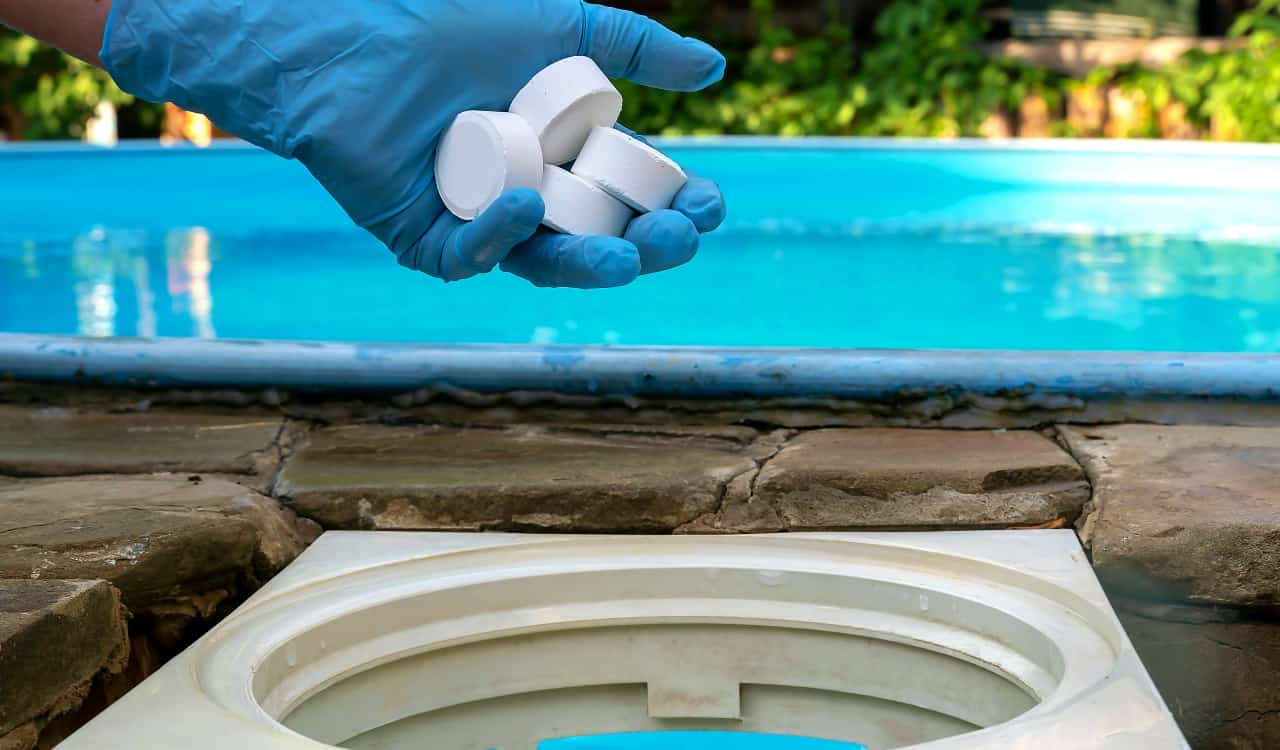
Chlorine
- What It’s Used In: Swimming Pool Cleaning, Development Of Meds, Antiseptics, Insecticides, Etc.
- Problems Caused: Cancer, Increased Heart Disease, Skin Allergies
The most popular use for Chlorine is typically to clean swimming pools. However, it’s also used to make medicines, antiseptics, insecticides, paints, paper products, plastics, dyes, and much more. Of course, you remember other products within these sectors, right? Many are toxic and chlorine is no different. It’s truly one of the most dangerous ingredients one can use. For some, chlorine can cause asthma or skin allergies. For others, it has shown to cause bladder and rectal cancer along with increased heart disease.
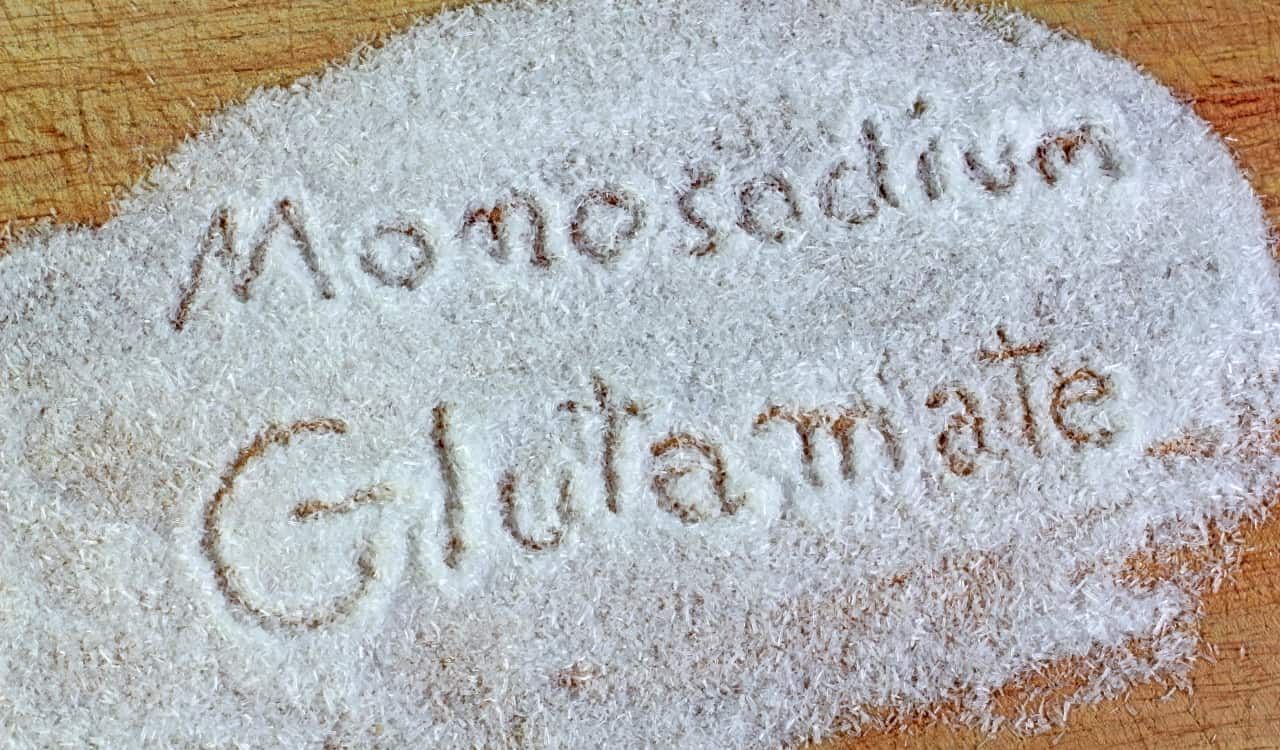
Monosodium Glutamate (MSG)
- What It’s Used In: Soups, Processed Meats, Canned Foods, Etc.
- Problems Caused: Metabolic Disorders, Neurotoxic Effects, Problems With Reproductive Organs
Likely the most controversial of all the dangerous ingredients on this list, Monosodium Glutamate is beloved by food companies. This is mostly due to being a useful food enhancer, often used in soups, processed meats, and canned vegetables. Of course, most will recognize the MSG content right away due to its salty taste (the sodium). While the U.S. FDA believes its safe, there is a lot of issues with it. Most feel it is the overexposure we have to them are the true problem. As they can cause metabolic disorders, obesity, neurological issues, and problems with reproductive organs.
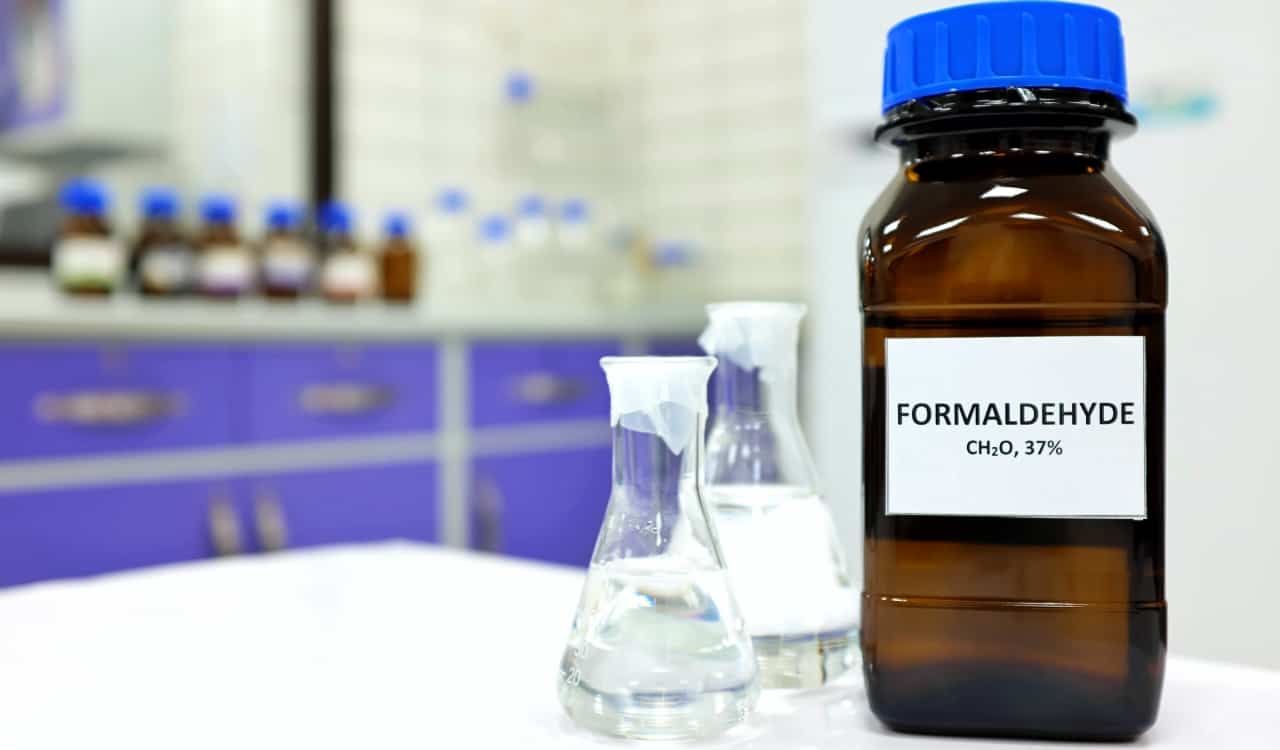
Formaldehyde
- What It’s Used In: Industrial Disinfectants, Insulation, Glues and Adhesives, Etc.
- Problems Caused: Respiratory Problems, Dermatitis, Etc.
The colorless gas, Formaldehyde, known for its strong smell, is often used in household products. It’s also used for press-wood products, glues and adhesives, on top of some insulation materials. Many will know its smell from hospitals or funeral homes due to it being an incredible disinfectant. However, formaldehyde has a lot of issues. Long-term exposure causes respiratory problems, dermatitis, and much more. Short-term exposure beyond 100 ppm can be immediately life-threatening.

Nitrogen Dioxide
- What It’s Used In: Rocket Fuel, Explosives, Etc.
- Problems Caused: Lungs and Overall Respiratory System Issues
You don’t need to be a rocket scientist to know that Nitrogen Dioxide is incredibly dangerous. Most of the uses for it are in pyrotechnics, explosives, rocket fuel, etc. Yet it also operates as an oxidizing agent, and so much more. While the immediate danger is its high rate of flammability and environmental issues, it can do so much more to us. The most common problem people have, outside explosions, is toxicity. This causes immediate issues with the lungs and overall respiratory system.

Mercury
- What It’s Used In: Scientific Instruments
- Problems Caused: Neurological Issues, Kidney and Lung Damage, Respiratory Issues
Can you believe we once used this stuff for so many things? Today, the use of Mercury is almost exclusively used in scientific instruments like thermometers, barometers, and even fluorescent lamps. But not much else. Of course, some mercury is natural like what you get from sea creatures. This is not enough to harm us normally, but the chemical form of mercury can. Inhalation of it can cause severe respiratory issues, damage the lungs and kidneys, and even cause neurological problems.

Sodium Nitrate
- What It’s Used In: Lunch Meat and Other Packaged Foods
- Problems Caused: Heart Disease
Sodium Nitrate is almost impossible to avoid. It is mostly in any packaged product, especially bacon, jerky, hot dogs, lunch meat, and much more. It acts as a food preservative, which tends to work out pretty well. The issue is that, due to our large overexposure to sodium nitrate, we’re likely to experience health complications from it. SN mostly affects our blood vessels, as it damages them and makes them more likely to harden or narrow. Thus causing various heart diseases. Some, such as the World Health Organization, have claimed sodium nitrates could be carcinogenic.
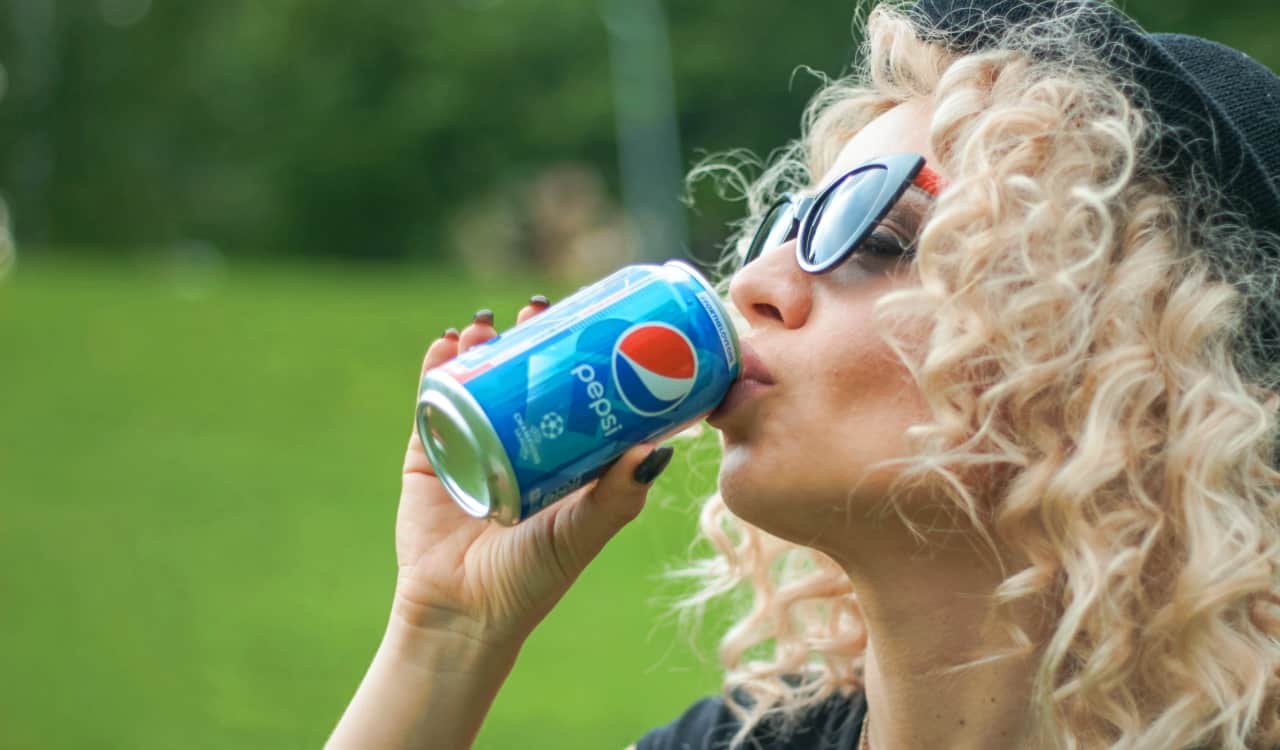
High Fructose Corn Syrup (HFCS)
- What It’s Used In: Baked Goods, Soft Drinks, Etc.
- Problems Caused: High Blood Pressure, Diabetes, Obesity, Insulin Resistance
High Fructose Corn Syrup is something we could likely spend an entire article discussing. It mostly operates as a sweetener, which is why it tends to be in a lot of baked goods, soft drinks, and other things like them. Obviously, this is involving sugar which we know is bad for us with long-term use. In spite of what soft drink and food companies want you to believe, HFCS is bad. They cause insulin resistance, obesity, type 2 diabetes, as well as high blood pressure.
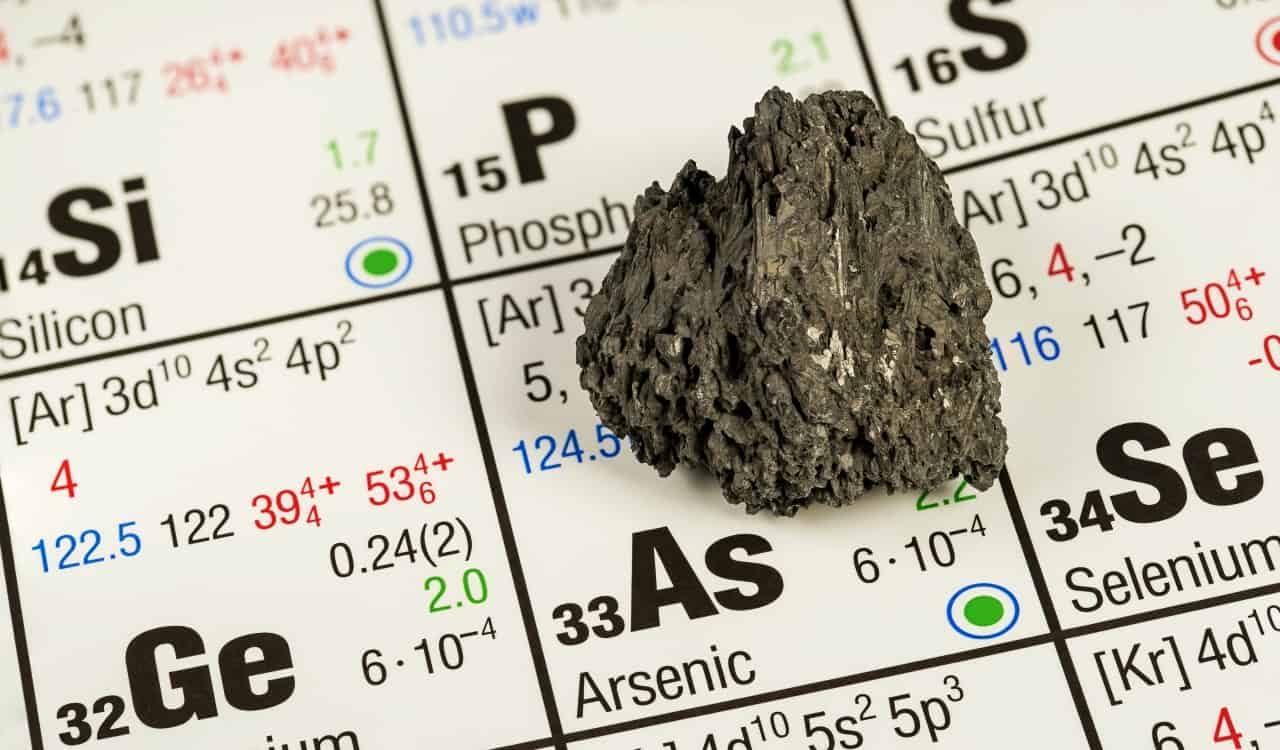
Arsenic
- What It’s Used In: Bronzing, Pyrotechnics, Preserving Wood, Etc.
- Problems Caused: Cancer, Lung Disease, Heart Disease
Arsenic is one of the most dangerous ingredients one could ever hope to add to something. It has been used in bronzing, pyrotechnics, and the development of specialized glass. On top of preserving wood. However, the U.S. FDA calls it a known carcinogenic as it can cause skin, bladder, and lung cancer. Along with heart disease. This has made it a popular item to poison people with.
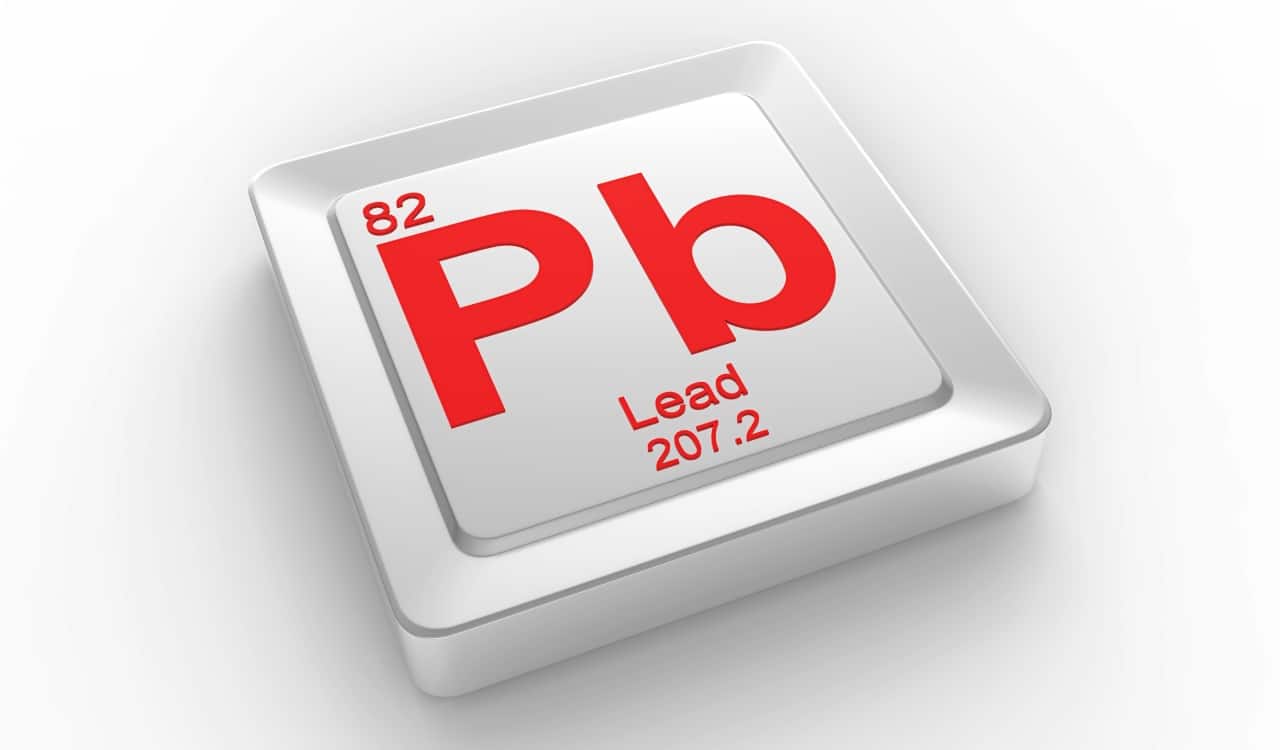
Lead
- What It’s Used In: Ammunition, Weights, Car Batteries, Etc.
- Problems Caused: Brain and Kidney Damage
While lead is somewhat naturally occurring, it is one of the most toxic things humans ever used. Today, we still use it for radiation protection, ammunition, car batteries, weights, and storing corrosive liquids. Yet history shows us that lead poisons the human body. It does this by absorbing calcium, harming blood cells. This will then rework our bodies, thus damaging our nerves, blood vessels, and bones. Leading to brain and kidney damage.
